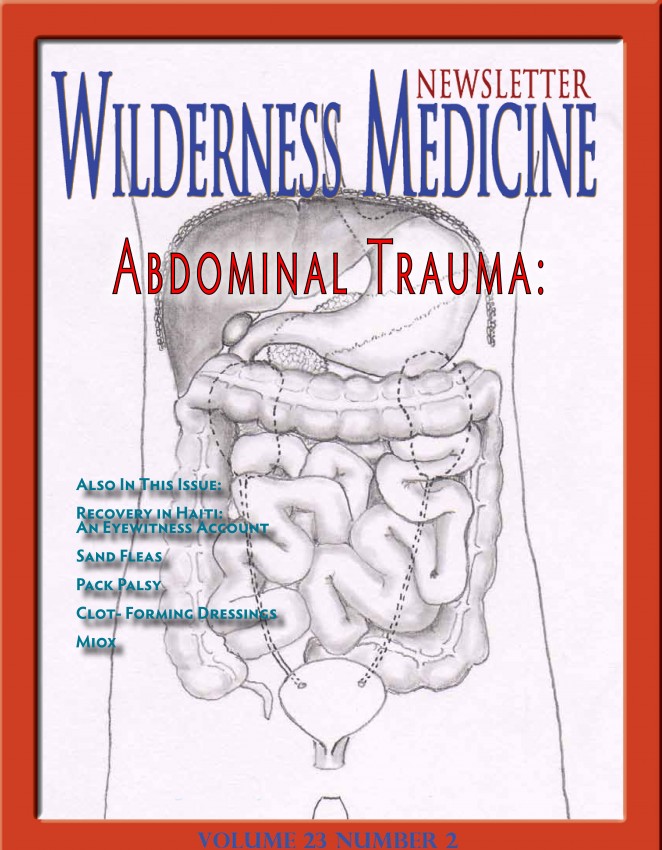How to Apply a Tourniquet in the Wilderness Setting:
January/February 2011 ISSN-1059-6518 Volume 24 Number 1
How to Apply a Tourniquet in the Wilderness Setting:
Brad L. Bennett, PhD, NREMT-P, WEMT, FAWM
Captain, US Navy (Ret.)
Member, Committee on Tactical Combat Casualty Care
SOLO Wilderness Medicine Instructor
Tidewater Search & Rescue, Virginia
Member, Committee on Tactical Combat Casualty Care
“The new concept of Tactical Combat Casualty Care (TCCC)
has revolutionized the management of combat
Casualties in the prehospital tactical setting.”
R. Mabry, MD and J. McManus, MD
Critical Care Medicine, 2008
Is there a place for a tourniquet in your backcountry jump kit? Well, possibly, but does everyone in the backcountry need to carry them? Does wilderness epidemiology provide evidence for the frequency of severe bleeding? Does shock result in the same outcome no matter the mechanism of injury? Are all tourniquets effective? Should we use them? It is not that simple! The answer is not yes or no, but, when, where, why, how and which ones? The following discussion is the most up-to-date information from the Department of Defense tourniquet use on thousands of casualties over the past 10 years. The answers to these questions should become clear as you read this article.



